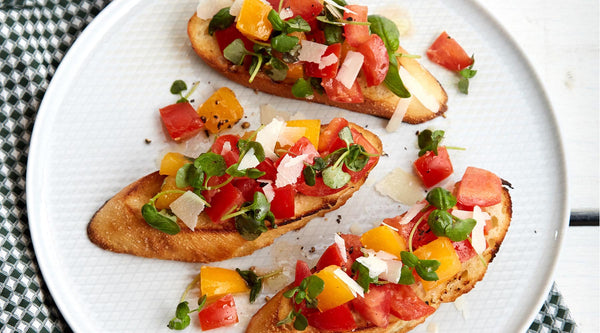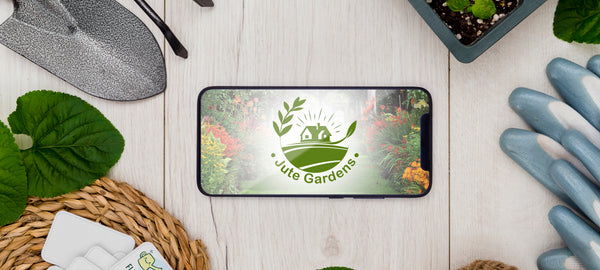
Basil Microgreens: The Secret Ingredient
Microgreens have become more popular in recent years as a way to add fresh, nutritious greens to meals all year round. One of the most popular microgreens to grow is basil. Not only is it easy to grow and versatile in the kitchen, but it also packs a punch when it comes to nutrition. In this article, we will explore the nutritional benefits of basil microgreens, how to grow them at home, and ways to add them into your meals.
Vitamins and Minerals
Basil is a popular herb that is often used in Mediterranean and Asian cuisine. The microgreen version of basil is no different in flavor, but it offers a concentrated dose of vitamins and minerals. According to a study published in the International Journal of Food Sciences and Nutrition, basil micro greens contain high levels of vitamin K, vitamin C, and beta-carotene. They also have a good balance of minerals such as calcium, iron, and potassium. In comparison to mature basil plants, microgreens have been found to contain up to 40 times more nutrients per weight. This makes them a great addition to any diet, particularly for those looking to boost their vitamin and mineral intake.
Nutritional Compounds
Basil microgreens have also been found to contain compounds that have potential health benefits. One such compound is eugenol, which is found in high concentrations of basil and has been found to have anti-inflammatory and analgesic properties.
Click here for an article on the history of basil and the medicinal uses of basil.
Additionally, basil micro greens contain a compound called rosmarinic acid, which has been shown to have antioxidant and anti-inflammatory properties. This makes basil micro greens a great choice for those looking to support overall health and well-being.
Growing Basil Microgreens at Home
Growing basil microgreens at home is a simple and rewarding process. All you need is a container, soil, and basil seeds. A porous container is ideal, as it allows for proper drainage and prevents the soil from becoming waterlogged. We recommend a jute fiber base such as those found in Jute Gardens' Microgreen Kits.

To start growing your basil microgreens, fill the container with soil and press it down firmly. Next, sprinkle the basil seeds over the soil, making sure they are evenly distributed. Cover the seeds with a thin layer of soil and then water them well. Keep the soil moist, but not waterlogged, by misting it with water regularly. Within a few days, you should see the first sprouts emerge. Once the microgreens are about an inch tall, they are ready to harvest.
Recipes
When it comes to incorporating basil microgreens into your meals, the possibilities are endless. They can be used in place of basil leaves in any recipe, adding a fresh, flavorful punch. They can also be added to sandwiches, salads, and smoothies for an extra boost of nutrients. Some other ways to use basil microgreens include:
- As a garnish on soups and stews
- Mixed into pasta dishes
- Used as a topping on pizzas
- As a flavorful addition to scrambled eggs or omelets
- As a garnish for cocktails or mocktails
Basil Microgreens as a Garnish
In addition to their culinary uses, basil microgreens can also be used decoratively. They can be used as a beautiful and edible garnish on platters and plates, adding a pop of color and flavor. They can also be used in companion planting in a garden, basil being a natural pest repellent.
In conclusion, basil microgreens are a great way to add fresh, nutritious greens to your diet all year round. They are easy to grow at home and can be used in a variety of ways in the kitchen. From adding flavor to sandwiches and salads to being used as a garnish.
Frequently Asked Questions
Q: What are microgreens?
A: Microgreens are the young sprouts of edible plants, typically harvested when they are just a few inches tall. They are packed with nutrients and are often used as a flavorful and nutritious garnish or addition to salads, sandwiches, and other dishes.
Q: What are the nutritional benefits of basil microgreens?
A: Basil microgreens contain high levels of vitamin K, vitamin C, and beta-carotene. They also have a good balance of minerals such as calcium, iron, and potassium. They contain a compound called eugenol, which has anti-inflammatory and analgesic properties, as well as rosmarinic acid, which has antioxidant and anti-inflammatory properties.
Q: How do I grow basil microgreens at home?
A: To grow basil microgreens at home, you will need a container, soil, and basil seeds. Fill the container with soil, press it down firmly, sprinkle the basil seeds over the soil, cover them with a thin layer of soil, and water them well. Keep the soil moist, but not waterlogged, by misting it with water regularly. Once the microgreens are about an inch tall, they are ready to harvest.
Q: How can I use basil microgreens in my cooking?
A: Basil microgreens can be used in place of basil leaves in any recipe, adding a fresh, flavorful punch. They can also be added to sandwiches, salads, and smoothies for an extra boost of nutrients. Some other ways to use basil microgreens include as a garnish on soups and stews, mixed into pasta dishes, used as a topping on pizzas, as a flavorful addition to scrambled eggs or omelets, and as a garnish for cocktails or mocktails.
Q: How long do basil microgreens last?
A: Once harvested, basil microgreens can last up to a week in the refrigerator, if stored in a sealed container or plastic bag with a damp paper towel. To maximize their shelf life, it's best to harvest them just before using them.
Q: Can I use any type of basil seed to grow microgreens?
A: Yes, you can use any type of basil seed to grow microgreens. However, it's best to use seeds that are labeled as "microgreen" or "sprouting" seeds, as they are specifically bred for this purpose.
Q: Are there any pests or diseases that I need to be aware of when growing basil microgreens?
A: Generally, basil microgreens are not prone to pests or diseases. However, if you notice any signs of mold or mildew, it's important to address them quickly to prevent them from spreading to the rest of your microgreens.

